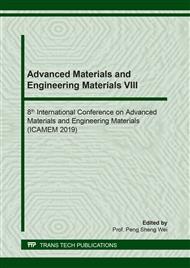p.372
p.378
p.387
p.393
p.399
p.404
p.413
p.419
p.425
Correlation between Unconfined Compressive Strength and Penetration Index Obtained from DCP Tests for Cemented Lateritic Soils
Abstract:
This paper presents the relationship between the dynamic cone penetration (DCP) test results and the unconfined compressive strength of lateritic cemented soils. A series of DCP tests and unconfined compressive strength was performed on lateritic cemented soil. The soils sample used in this study was lateritic soil. The test results for the DCP tests are presented in terms of penetration index. It can be observed that the penetration index decreased with increasing curing period and cement content. Moreover, the unconfined compressive strength of cemented soils increased with curing period and cement content. The relationship between unconfined compressive strength and penetration index is presented. A unique relationship for unconfined compressive strength can be obtained.
Info:
Periodical:
Pages:
399-403
Citation:
Online since:
July 2019
Authors:
Keywords:
Price:
Сopyright:
© 2019 Trans Tech Publications Ltd. All Rights Reserved
Share:
Citation:


